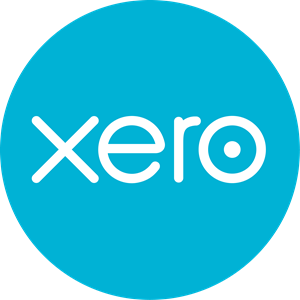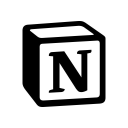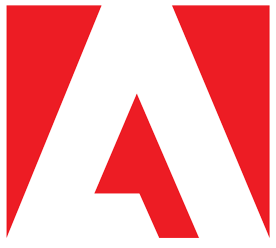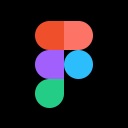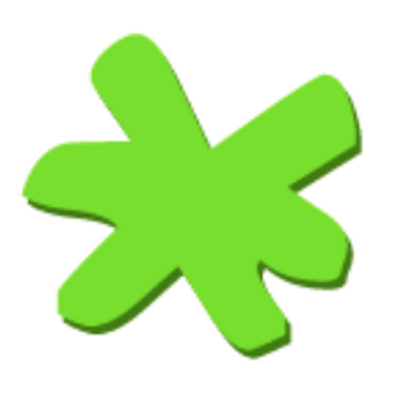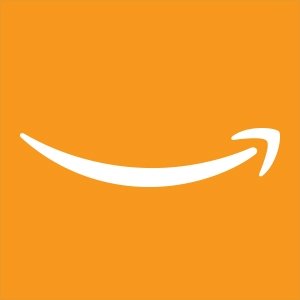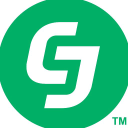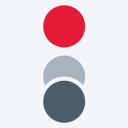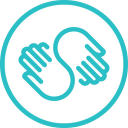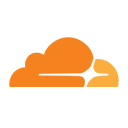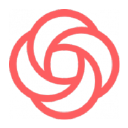I Made $2.1M in Two Years Teaching People How to Use Notion
Hello! Who are you and what business did you start?🔗
Well hello there! My name is Thomas Frank and I run a business teaching people how to use Notion and selling Notion templates. I also run a productivity-focused YouTube channel with 2.9 million subscribers, and I’m building a SaaS product called Flylighter.
Our flagship template is called Ultimate Brain, which turns Notion into a complete personal productivity system with tasks, notes, projects, and goal-tracking. We also sell a template for content creators called Creator’s Companion, which helps creators plan and produce content across all of their social media channels directly in Notion.
In about two years, we’ve done $2.1 million in sales for these two templates. Currently, template sales are around $120k/mo on average, and we also pull around $15k/mo through additional income sources – affiliate deals and YouTube AdSense making up the bulk of that.

We’re now working on tools to complement our templates, starting with Flylighter – a powerful web clipper and idea-capture tool for browsers and iOS that will help Notion users instantly capture web clips, highlights, annotations, voice notes, and more.
What's your backstory and how did you come up with the idea?🔗
I launched my first premium Notion template in late 2021 and launched Ultimate Brain in 2022. However, I started my business back in 2010, when I was still in college.
Everything I’m doing today is a direct evolution from that starting point – including our templates. I’m less a serial entrepreneur and more a creator who has branched into e-commerce and SaaS, leveraging the platform I’ve built up through blogging and YouTube for marketing.
I started college in 2009, during the fallout of the 2008 financial crisis. My dad had lost his job, along with a lot of other people our family knew. So I went into college thinking I would have to work insanely hard just to compete and get a job.
That led me to read every college prep book in my city’s library, and to reading tons of productivity blogs as a freshman. One of those blogs, HackCollege, put out a call for new writers near the end of my freshman year. I applied to write for their team, but I was rejected – so I decided to take the article I’d written as part of my application and build my blog, College Info Geek.
College Info Geek’s Original Design

In 2012, the blog hit “full-time” income (read: enough to pay my bills living in an apartment in Iowa with three other dudes) and I decided to go all-in on it instead of looking for a full-time job. I paid off all my student loans, started a podcast, and then started creating YouTube videos in late 2014.
I hit 100,000 subscribers in 2015, then hit 1 million subscribers in early 2018. In short, my channel-building strategy was to create high-quality, fun-to-watch videos on studying and productivity.
In the beginning, I focused on students – and at the time, there was almost no one else making content like this regularly. I was also able to gain initial traction by posting summaries of my videos to a small subreddit (r/getstudying) where I built up a helpful reputation that caused the community to be ok with me essentially doing self-promo.
From 2017 to 2022, I published regular videos on the channel and nearly every one of them was sponsored, thanks to my agency Nebula (which I now co-own). We eventually got to around $50k/mo in revenue, mostly from brand deals on videos. My team also started growing, and we started to feel the need for more robust organizational systems.
That’s what led me to Notion. At first, we used it simply as a company wiki, but then I discovered that it’s also fantastic for managing video production. I built a robust content planning system for my team, which gave us a single place to capture ideas, write scripts, organize shot lists, and manage our editorial calendar.
In 2021, I started hitting major burnout making videos. The money was good, but I felt like I wasn’t pushing myself to learn new things. My publishing schedule wouldn’t allow it, and I felt that I had to keep it up to pay my team.
So I started looking for a way I could diversify away from solely relying on brand deals, and originally I thought I’d make a course for creators looking to use Notion.
As I was planning out that course, I slowly started to realize that I’d much rather make a product instead – and I’d already built it! I took the content planning system I’d built for my team, polished it up, and released it as a premium template called Creator’s Companion.

The only validation I had for this idea at the time was the fact that I’d built the system for my team and we found it incredibly useful. I didn’t bother doing any market research, as I knew the additional effort needed to productize our template was quite low. I just did the work and released the template.
Take us through the process of building the first version of your product.🔗
For Creator’s Companion, building the first version of the product mostly happened organically from 2018-2021, as we built and tweaked our internal content planning system.
In mid-2021, I spent $3k to take On Deck’s course creator fellowship class, thinking I was going to monetize Thomas Frank Explains through a cohort-based Notion course. Instead, taking that class made me want to build a product, and I decided to simply take our internal content planning system and productize it.
I started building it in June 2021 and had the first version ready quickly. I also started collecting survey responses and waitlist signups in a very subtle way – I simply put a link to a landing page at the top of all my free templates. Beyond that, I did no marketing.
I had planned to launch in June 2021 but had to delay the launch by about 45 days because of a major bug that cropped up in Notion itself. I needed to make sure they fixed the bug before launching.
I launched on August 31, and initially capped the launch at 100 sales, as I was worried about getting too many sales before knowing that the template didn’t have major bugs that needed fixing. After a couple of weeks, I got a feeling for how sales were going and removed the sale cap.
In the first month, we made $12,858 from 112 sales. By the end of 2021, we’d sold 367 copies and made $49,019.
I’ll switch gears to Ultimate Brain now, since it’s by far our best-selling template and since it was designed (mostly) from scratch.
Ultimate Brain is our personal productivity template; it combines notes, tasks, projects, goal-tracking, and more into a single template – allowing people to plan and organize their lives entirely in Notion. I envisioned it as a product for a wider audience compared to Creator’s Companion, which is aimed squarely at serious content creators.
Ultimate Brain is also a product that I wanted first and foremost for myself. When I discovered Notion, I was tired of juggling a bunch of different productivity apps. I wanted everything in one place.
By 2022, I felt Notion had improved the product enough that I could finally realize that, so I started building Ultimate Brain. This time, I did have a decent amount of validation for the product. In 2020, I released a free task management template called Ultimate Tasks, and I made a tutorial for the build process that was very popular. It currently has 769,000 views, and the free template itself built my Notion-specific email list up to around 35,000 subscribers by early 2022.
Based on that template’s performance and the strong sales of Creator’s Companion (with very little marketing), I decided to simply take a month off of content creation and build Ultimate Brain.
I used Ultimate Tasks as a base, then added everything I felt should be included in an all-in-one second brain template – note-taking, goal tracking, a daily planning dashboard, etc.

I also wanted to include workflows for popular productivity systems like Tiago Forte’s PARA and David Allen’s GTD.
Getting GTD to work with the sub-task system I built was particularly challenging, as you can see from this crazed photo of me during development:

Startup costs were minimal, other than a couple of “hidden” costs:
- I took a full month off to build the template, intentionally not producing videos during that month. My sponsor rate was around $10,000 per video, so after my agency’s cut (20%), I was giving up $8,000 x the 2-3 videos I likely would have made.
- My developer Martin spent about two months perfecting the automated recurring tasks system we added to both Ultimate Brain and Ultimate Tasks. I estimate his dev time on that project cost me about $24,000.
Other than that, building a Notion template is free. This is why you see so many other creators doing it – the barrier to entry is essentially $0. Even distribution and fulfillment are free (other than transaction fees). Many creators distribute with Gumroad and build audiences on X/Twitter and LinkedIn.
Our actual costs were more than $0 since I was already using more sophisticated tools – including ConvertKit for email marketing and WordPress for my website.
Describe the process of launching the business.🔗
I spent way too much time agonizing over website platforms, payment processors, marketing software, and other nitpicks before launching Creator’s Companion in August of 2021.
Eventually, I just said “screw it” and decided to use the easiest payment platform I could find, Gumroad. To distribute the template, I set up a system of tools:
- The Notion template itself is simply a public Notion page that can be duplicated by other people.
- I distributed the template link to customers through Circle, which I also used to publish tutorials and provide active support.
- I also added buyers to ConvertKit so I could automatically email them their template link.
Once I had my checkout and distribution system in place, I created a sales page on my website. The current sales page looks pretty similar to how it originally looked; the main difference is that we now have more testimonials to show, and I’ve updated the screenshots to reflect the latest version of the template.

My website is built on WordPress, and I built the sales page itself using Elementor – a drag-and-drop page builder for WordPress. The “Buy” buttons on the pricing table simply brought customers to a Gumroad checkout page.
When I launched, I did very little marketing. I was afraid of getting too many customers all at once – I had over 2 million subscribers on YouTube at the time, and I was worried the product might have bugs that I didn’t want to expose to too many buyers all at once.
So I quietly built a waiting list through promo links in my free templates, then launched to 434 people:

This launch brought in $12,858 in sales during the first month:

For Ultimate Brain, my launch process was much better-defined. I also had the confidence to launch more quickly to more people.
On April 5, 2022, I launched Ultimate Brain to a waitlist of 3,201 people. The email got an 81% open rate and a 60% click rate.

Ultimately, it drove $88,241 in sales within the first month:

That was the first phase of the launch. A month later, I launched my full Notion Tips email list (35,000 people). This launch drove another $66,830 in sales.
Since launch, what has worked to attract and retain customers?🔗
Since the initial launch, our primary strategy for growth has been YouTube. My second channel, Thomas Frank Explains, is entirely dedicated to teaching people how to use Notion. Since I launched it in 2020, it has gained 203,000 subscribers and 8.7 million total views.
The goal of Thomas Frank Explains is to be the go-to resource for learning Notion, and I’ve striven to cover anything a person would want to learn – from the absolute basics of links and pages to the most advanced features like the API (we have a 2-hour long API course video that’s totally free).
This focus on complete niche coverage and high-quality video content has helped the channel grow organically. I did very little promotion of it on the main Thomas Frank channel – the vast majority of the growth has come through organic promotion via the YouTube algorithm.
This was a surprise to me, as I expected Thomas Frank Explains to be an entirely search-driven channel. I was delighted to be wrong about this; Suggested/Browse views eclipse search-driven views now.
Two months after I initially launched Ultimate Brain, I created a 45-minute video that walks through every feature of the template:
I was inspired to do this after watching Derek from More Plates More Dates release an 80-minute video covering every ingredient in his Gorilla Mode Nitric pre-workout. The video is an 80-minute ad for his product, but it’s also educational and I ended up watching the whole thing. (Spoilers: I bought the product too).
So I decided to do the same thing: Make a lengthy video covering every part of the product, showing everything, and then give people the opportunity to buy it at the end of the video.
To my surprise, the video did extremely well. It became the most-viewed video on the channel. To date, it has nearly 1,000,000 views and has brought in 12,000 subscribers directly. It’s also earned $6.6k in AdSense revenue.

However, the main result from this video was a massive – and sustained – bump in daily revenue. Once it went live, sales went from around $2,000-$2,500/day to $4,000-$5,000/day and stayed that way.

Aside from that video, which directly pitches the template, the channel in general has worked as a very effective indirect promotion channel. Viewers from it are encouraged to sign up for my Notion Tips newsletter through two avenues:
1) The Notion Fundamentals course – a free series of videos and articles teaching the basics of Notion. When people sign up for the newsletter, they also get a bunch of cheat sheets and other reference materials.
2) Free Notion Templates – whenever I create a build guide video, I also release a free template alongside it. I encourage people to sign up for our newsletter when they get the template, and then pitch our paid templates the day after they subscribe.
On the channel, I have several content buckets that I think about when planning videos:
- Build guides – long-form tutorials that teach viewers how to build something from scratch (e.g. a task manager or note-taking system). These tend to do the best long-term.
- Notion news – Coverage of new Notion features. These usually explode in views right out of the gate.
- Notion Fundamentals – Beginner-focused videos teaching the ins and outs of Notion.
- List-style videos – fun topics like “10 Mistakes You’re Making in Notion”
I also occasionally create no-code tutorials that use other apps to add extra functionality to Notion. My best example is my guide on taking notes with your voice.
I’ll note that TF Explains is much more “templatized” than my main channel, which makes producing content quickly easier. For example, I have a whole process for quickly designing thumbnails.
Finally, we also make written content and consider SEO. I’m more focused on YouTube, but I still try to create written guides for the most important topics.
For example, last year I wrote complete technical documentation (45,000+ words) for Notion’s formula feature.
How are you doing today and what does the future look like?🔗
In general, this year has been a bit slower in terms of growth. However, right now sales are strong as we’re running our first-ever Black Friday sale. In the past, I was always resistant to doing sales like this – but the results are now convincing me otherwise.

As for our general slowdown – while I’ve noticed many entrepreneurs I know experiencing sales slowdowns this year, for us I believe the primary reason was a lack of content publishing.
The reason for this was that this year I started investing a ton of my time into building automations for Notion. I learned JavaScript, got good at Pipedream, and started building powerful workflows like Notion Voice Notes and Notion Voice Tasks.
These projects were extremely fun to build, and I learned a great deal about building them. They’ve also both laid code foundations that will enable us to ship powerful features within Flylighter next year, much more quickly than we’d otherwise be able to.
However, they also took a lot longer than I originally anticipated. Getting a code-based workflow from 95% working to “rock solid” involves fixing a lot of hidden gotcha’s and doing lots of testing. I think I ended up investing about 3-4 months into these two workflows, rather than the 1-2 weeks I estimated each project would take.
In general, this is one of my weaknesses as an entrepreneur. I’m motivated a lot more by learning and discovery than I am by money, so I used the massive margins provided by our template sales as an opportunity to go all-in on programming and building these workflows (which I provide for free).
This caused us to have our first couple of unprofitable months in the history of my business – primarily because I also started investing around $22k/mo in Flylighter’s development to fast-track our iOS app.
So right now my foot is back on the gas; I’m recording videos much more often, experimenting with live streaming, and starting to hire writers to help me with written content. Going into 2024, one of my primary goals is to not be the only person in our company creating and publishing content.
My team and I are also creating more content for teams, and planning out more upmarket offerings as well – e.g. courses for teams, consulting offerings, and workspace build-outs.
Through starting the business, have you learned anything particularly helpful or advantageous?🔗
As detailed above, one of the primary mistakes I made this year was allowing myself – the one sales-generating person in the company – to go too deep on programming and product features. As my projects ballooned and took more time than anticipated, this caused me to make less content than before.
The major lesson I learned from this experience is that I need to do one or both of the following:
- Embrace my role as the creator of content and distribution in the company
- Start hiring additional people who can either help me create more content or simply create content that I’m not personally involved with (e.g. written articles)
On the positive side, I did make some decisions and built some extremely beneficial partnerships. I hired an Ops Director (Marissa Goldberg) to take over the management duties in the company, which was a very good move. Marissa’s strength is working directly with people, while I’m best at building tools in solitude and then teaching an audience. Those are my two superpowers, so I’ve tried to optimize my time for them.
Additionally, I was able to forge a very beneficial partnership with Pipedream this year, which resulted in them creating a lucrative affiliate program and shipping the ability for users to share automations with others.
Affiliate revenue is currently around $1,200/mo and scaling quickly, as affiliates get 33% of customer payments for the first 12 months. Pipedream automations are a perfect add-on to Notion templates.
What platform/tools do you use for your business?🔗
- Lemon Squeezy – our payment processor, which acts as Merchant of Record and fully handles tax collection and remittance
- Circle – our community platform, which handles template distribution, onboarding, beginner’s courses, and support
- HelpKit – our knowledge base
- Wordpress (self-hosted) – what the TJF website is built on
- Elementor – TJF uses a custom-built theme, but we use Elementor within it for our landing pages
- GridPane – our WordPress “hosting” platform. It’s a management platform that provisions servers from other providers (we use Vultr)
- ConvertKit – our email marketing platform
- Testimonial – after 7 days, we auto-email customers and ask them to write a testimonial on this platform. We then embed its Wall of Love on our sales pages.
- Pipedream – runs a lot of Notion automations, and also adds new customers from Lemon Squeezy to the correct ConvertKit sequences
- Notion – our main productivity tool
- Slack – our comms tool
- Front – our email inbox/email support tool. Let us assign emails to staff members and have conversations on email threads internally
- Dashlane – team password management
- TextExpander – team text snippets
- Frame.io – video collaboration tool
- MacWhisper – creates captions for all our videos in minutes
- ThumbsUp – a tool we build at Nebula for seeing how thumbnails and titles look at all official YouTube UI sizes
- OBS – the app I use for streaming and for quickly recording videos
- Cursor Pro and Keystroke Pro – tools I use to highlight my mouse and show keystrokes during tutorials
- Flylighter – idea/web clip capture tool (this is our tool – we eat our dog food)
What have been the most influential books, podcasts, or other resources?🔗
The most influential source of information in my life is my network of entrepreneur friends. In particular, talking every day with my friends within Nebula provides me with invaluable insights, ideas, and feedback.
This network is far more valuable to me than any book or podcast, so I want to stress that building up one of your own is much more important than consuming any kind of content.
When it comes to resources, I tend to spend a lot more energy studying how successful people implement their current strategies than consuming content that explicitly gives advice.
You’ll probably see lots of other case studies here on Starter Story sharing the latter (explicit advice), so I’ll share some of the people I actively study instead:
- Smart Passive Income – for website design and community management
- Alex Hormozi – for his active teaching style
- Justin Welsh – for the way he runs his newsletter
- Investopedia – for their information architecture (I also get a lot of inspiration from developer docs)
I also use Flylighter to capture references to well-designed websites when I see them. I do the same for YouTube thumbnails and clever video editing tricks as well. I have a whole Inspiration page in Notion where I capture all of these references.

Advice for other entrepreneurs who want to get started or are just starting out?🔗
Just get started. Don’t worry about having a perfect stack of tools. Make something that works, ship it, and tighten your feedback loops as much as possible.
The main reason I took so long to launch my first real product (almost 10 years) is perfectionism. I was afraid to release something that wasn’t perfectly polished.
I’ve since learned that early buyers simply want something that works. They’re ok with rough edges. And by shipping early and often, you get real feedback you can use to improve your products and systems. You can’t learn the same lessons by just sitting around reading case studies all day – at a certain point, you have to go get your scar tissue.
From that point, adopt the 1% rule. I typically talk about this rule in the context of starting a YouTube channel, but it applies to entrepreneurship as well:
Put yourself on a schedule, be fanatical about shipping on that schedule, and try to get 1% better in some area of your craft each time.
Aside from the skill-building benefits, this approach is also great for your customers. They get to see you shipping early and often, rather than going quiet for months and then dropping something massive (and often unfamiliar) all at once.
Are you looking to hire for certain positions right now?🔗
I’m currently looking to hire a part-time technical writer who can help me write more Notion-focused content on my website. I’m looking for:
- Notion product knowledge
- Good eye for design/composition (for crafting screenshots)
- SEO knowledge
If that’s you, email me or tweet me with work examples!
Where can we go to learn more?🔗
You can learn more about my business and connect with me here:
- Website
- Thomas Frank on YouTube
- Thomas Frank Explains on YouTube (Notion channel)

Download the report and join our email newsletter packed with business ideas and money-making opportunities, backed by real-life case studies.

Download the report and join our email newsletter packed with business ideas and money-making opportunities, backed by real-life case studies.

Download the report and join our email newsletter packed with business ideas and money-making opportunities, backed by real-life case studies.

Download the report and join our email newsletter packed with business ideas and money-making opportunities, backed by real-life case studies.

Download the report and join our email newsletter packed with business ideas and money-making opportunities, backed by real-life case studies.

Download the report and join our email newsletter packed with business ideas and money-making opportunities, backed by real-life case studies.

Download the report and join our email newsletter packed with business ideas and money-making opportunities, backed by real-life case studies.

Download the report and join our email newsletter packed with business ideas and money-making opportunities, backed by real-life case studies.






